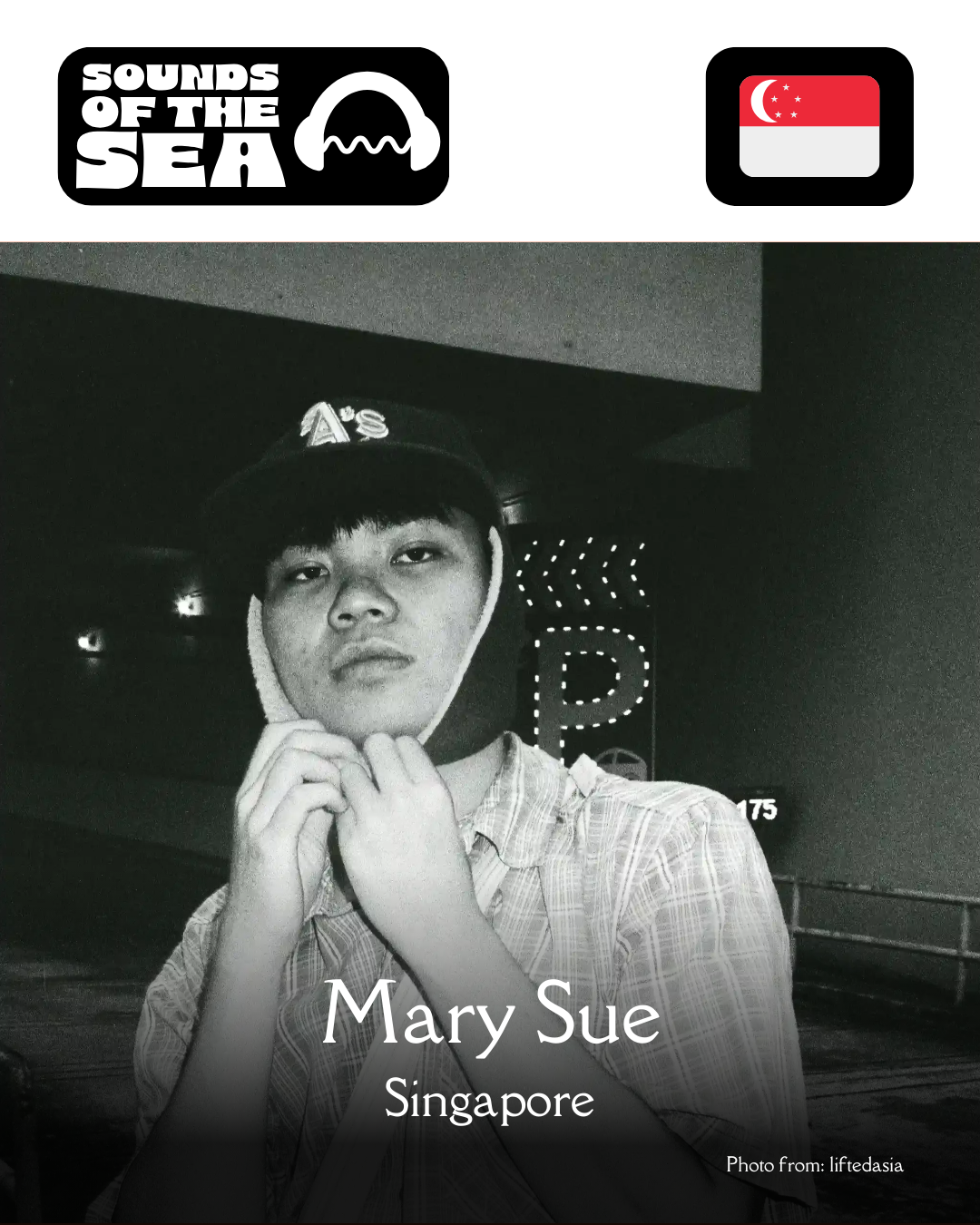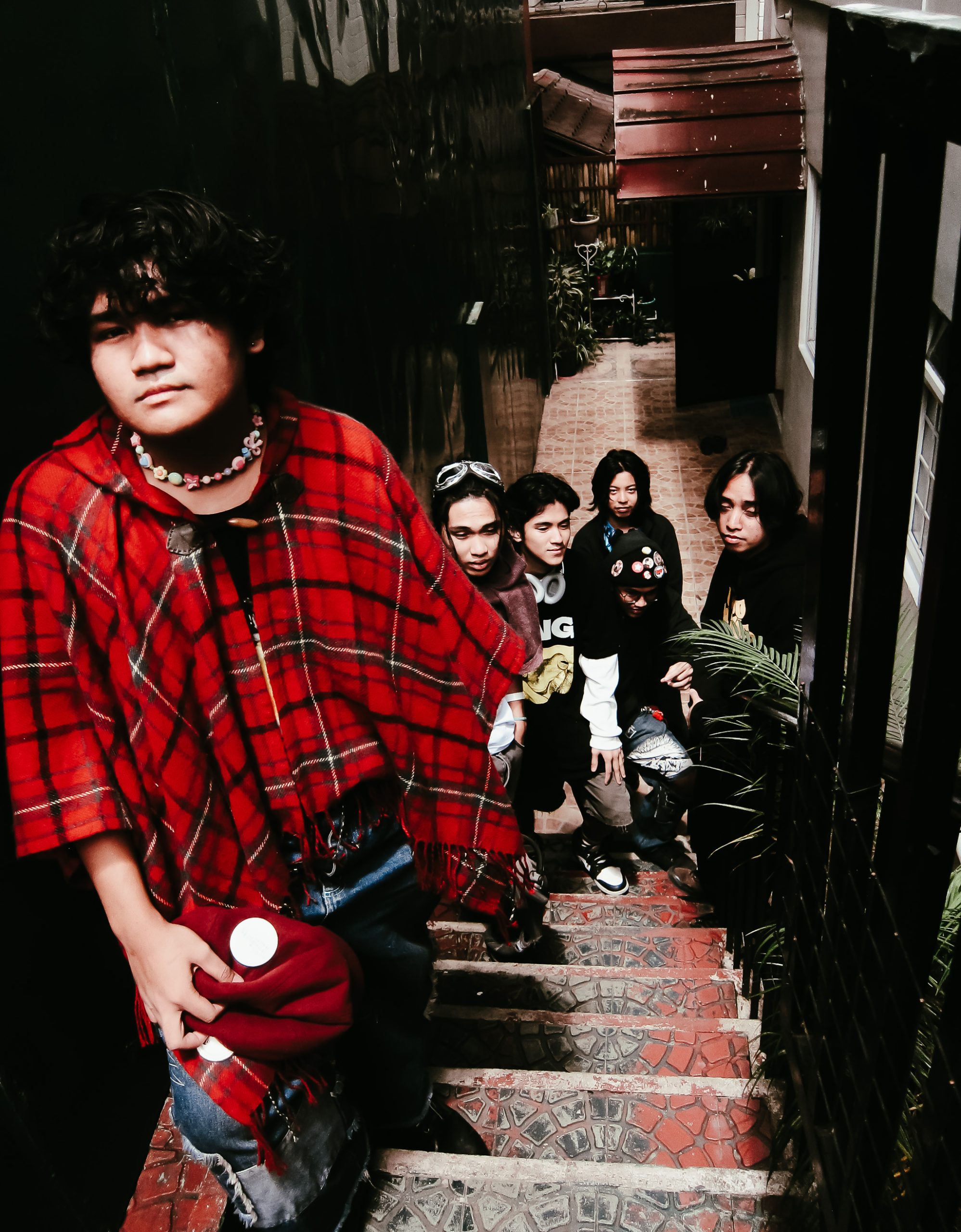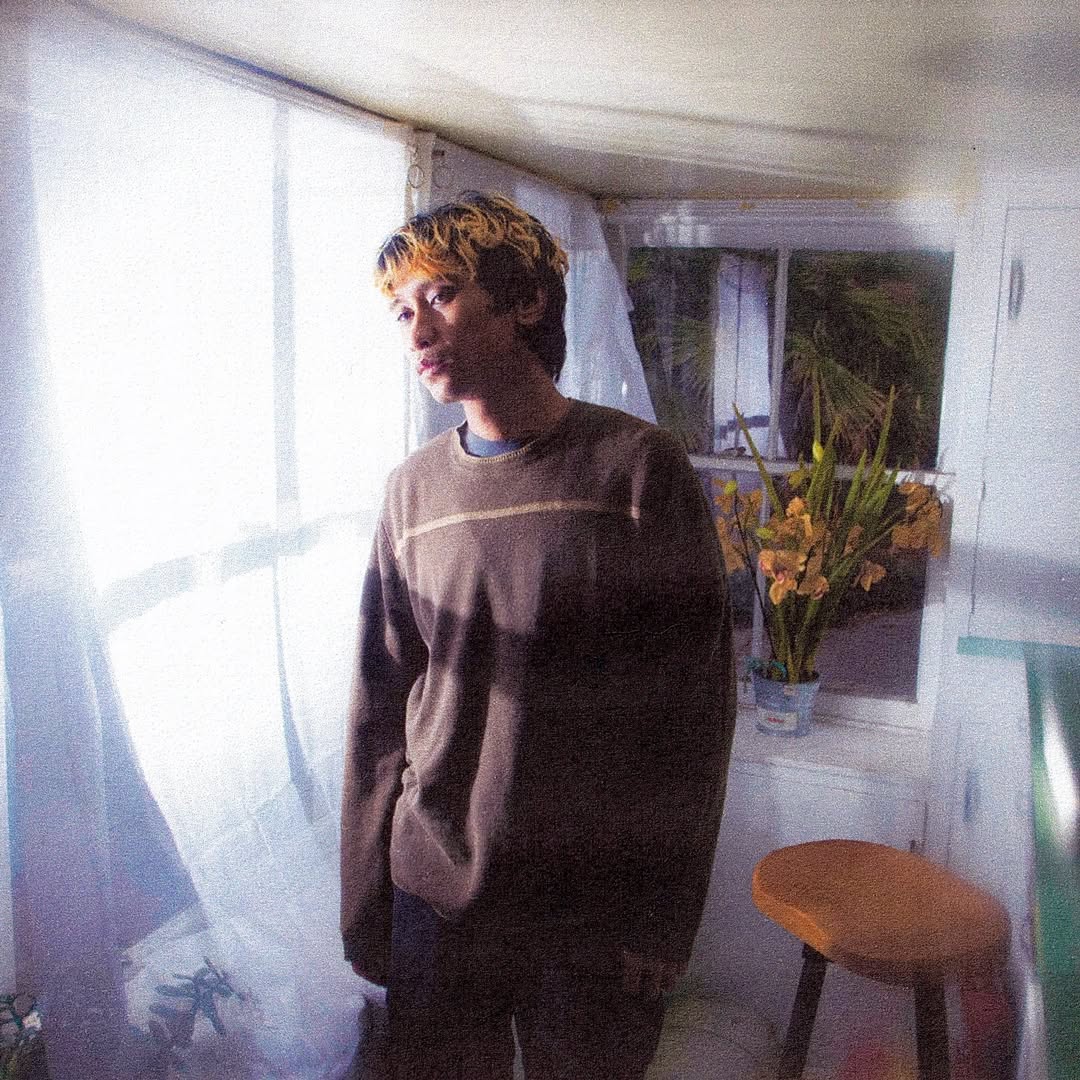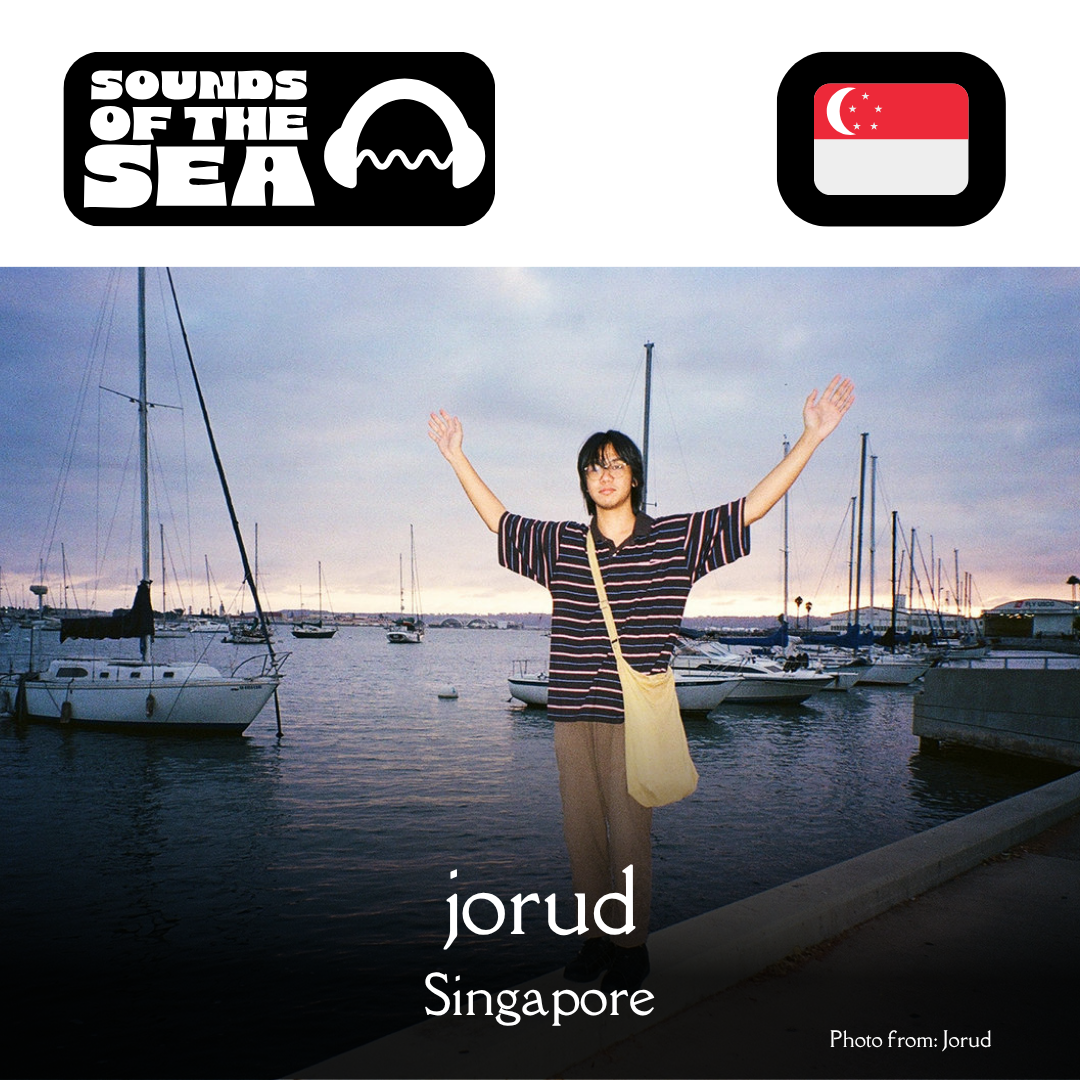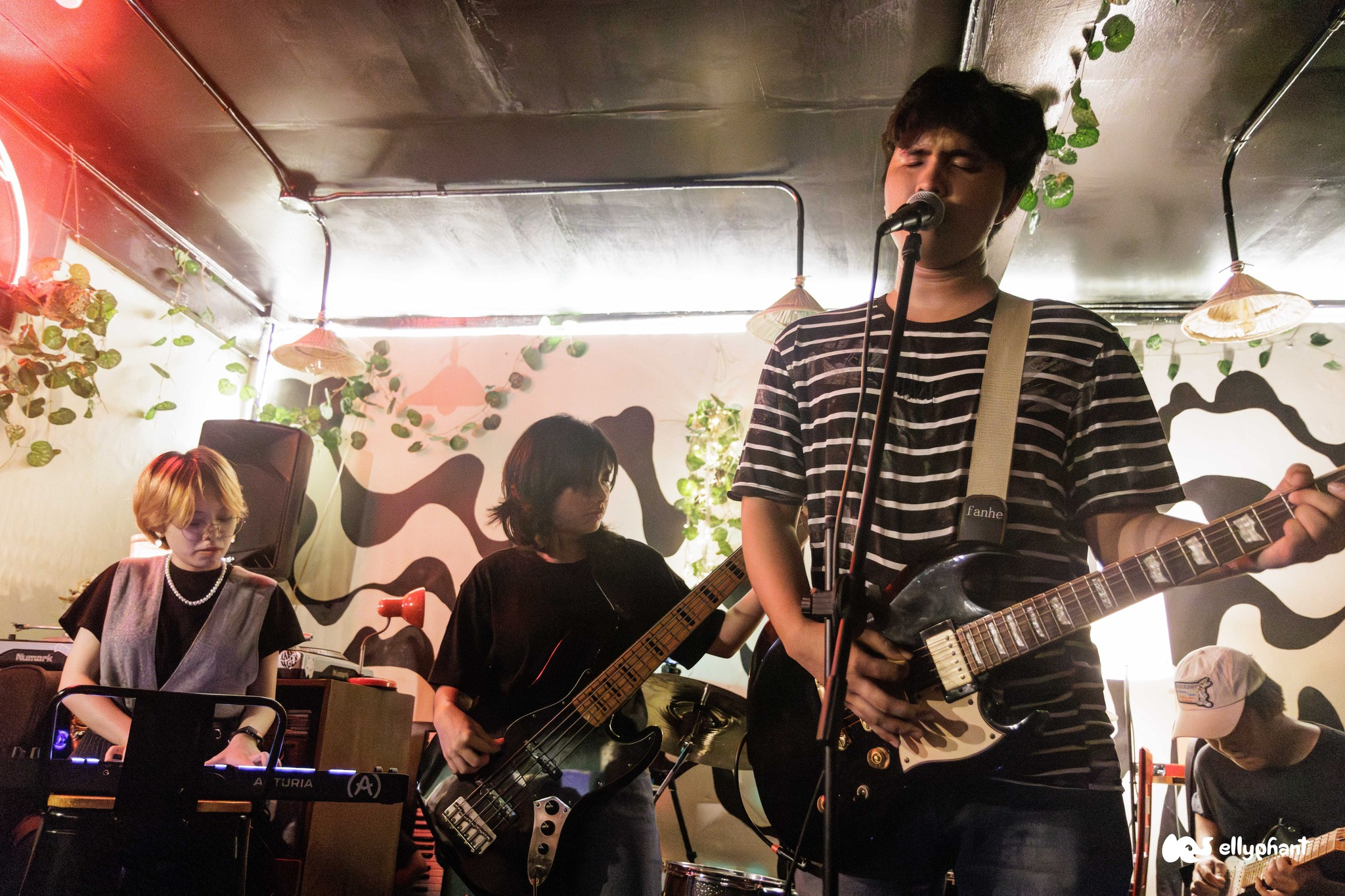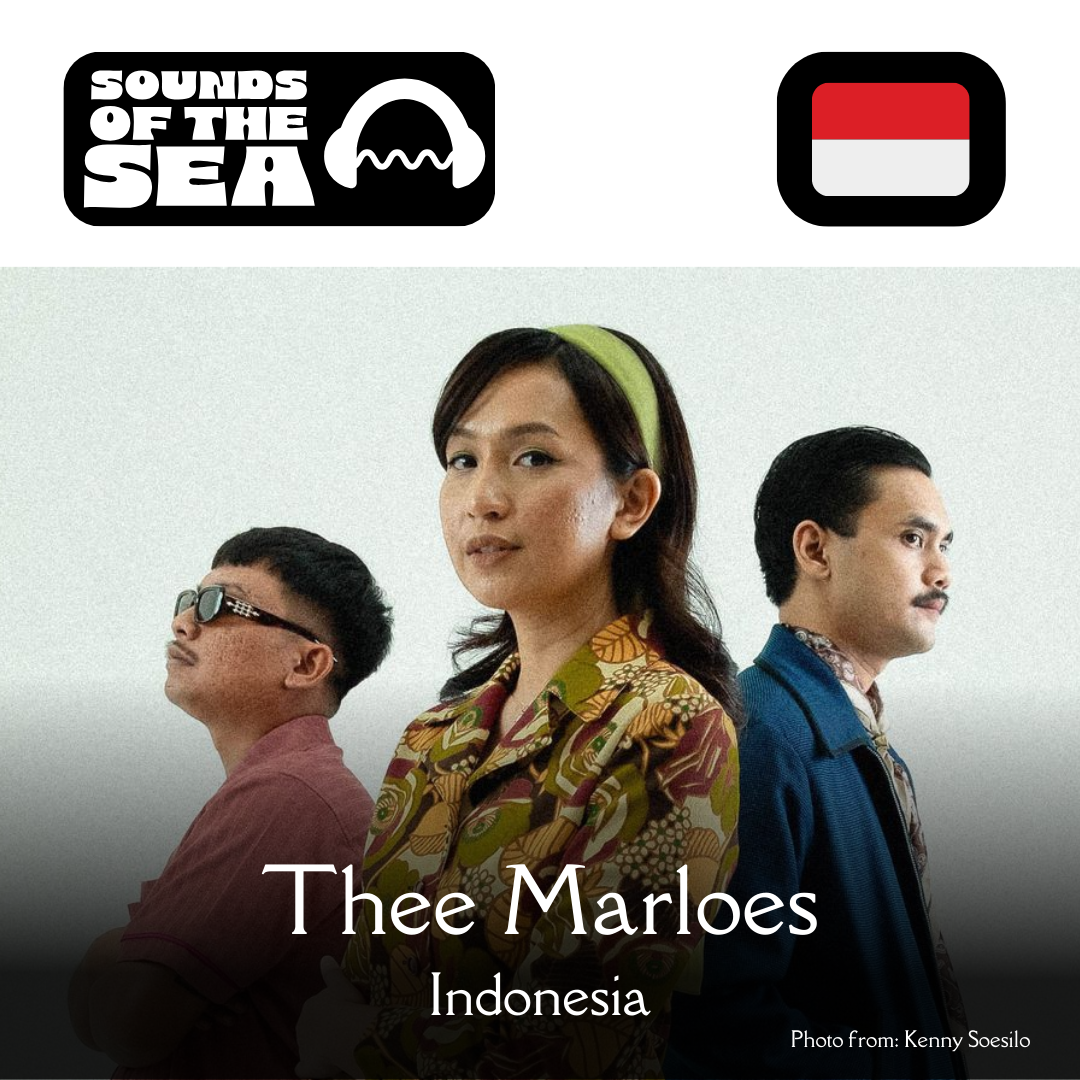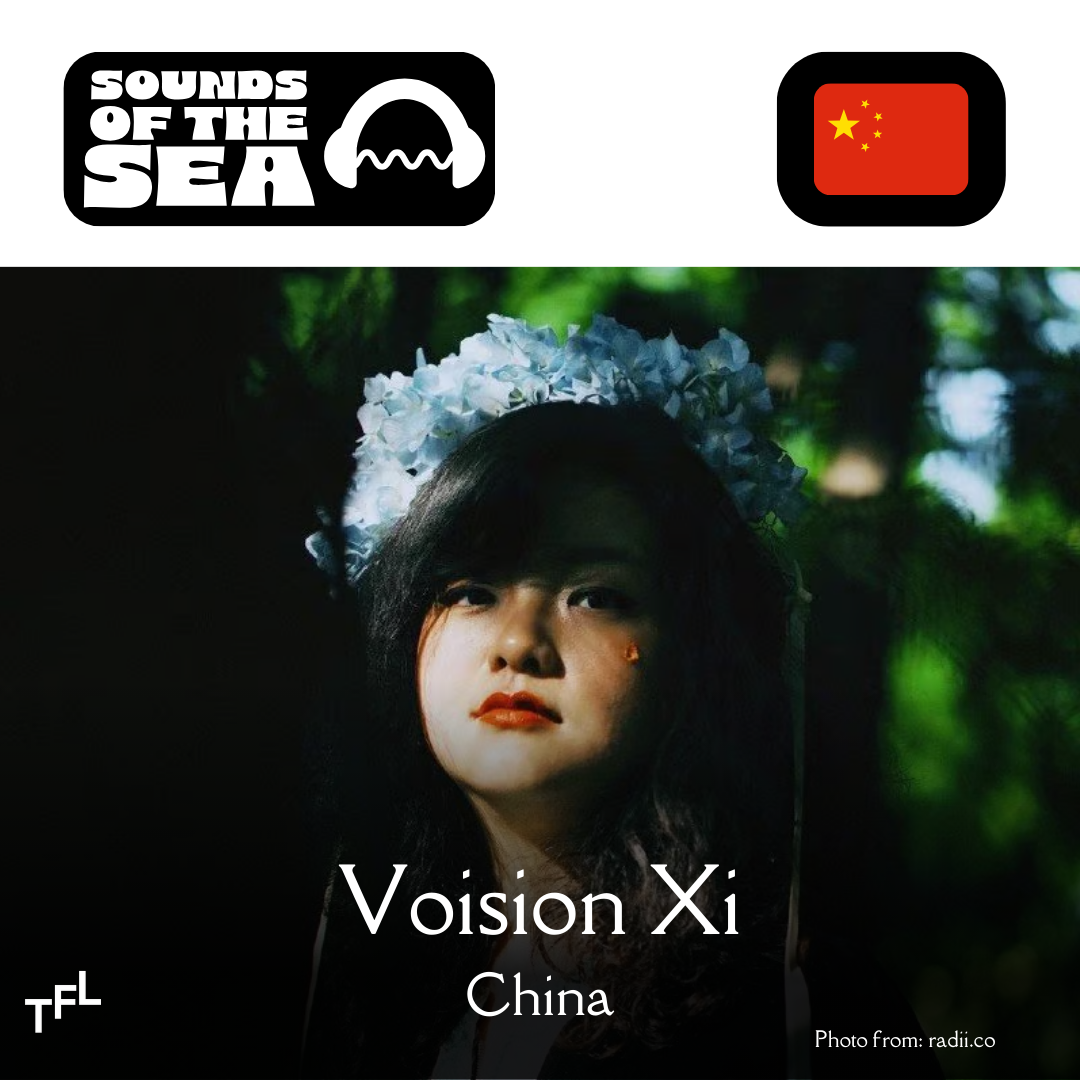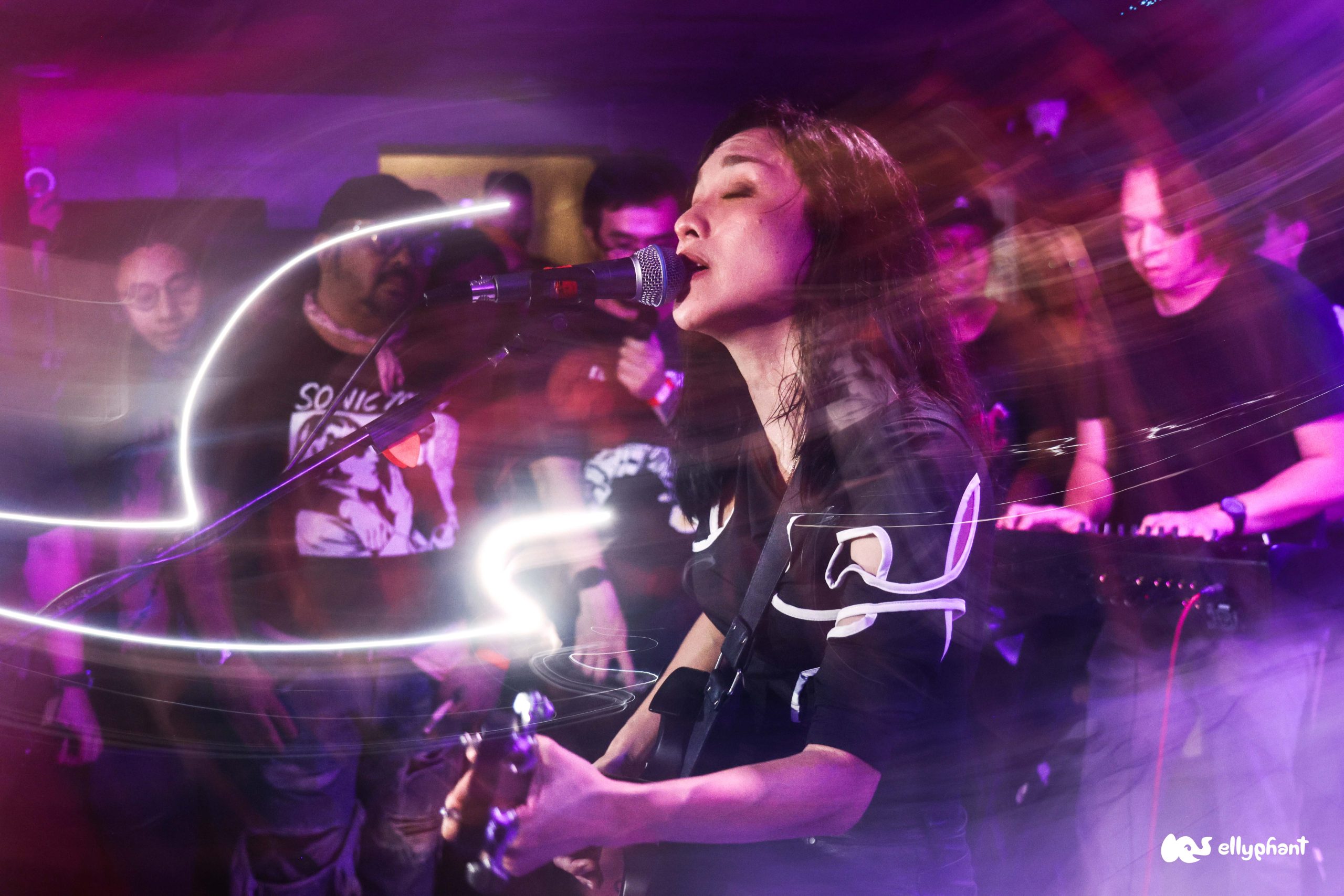The hip-hop scene in Singapore only continues to grow with every passing moment. Groups such as Construction Sight, Triple Noize, and Urban Xchange marked their impact in the 90s and the 2000s, yet it took quite some time before the culture flourished throughout the country. In the 2010s, more artists such as Akeem Jahat, Yung Raja, THELIONCITYBOY, ShiGGA Shay, and Masia One eventually made their name in the mainstream, carrying and shaping what is there to be shown in Singapore’s Hip-Hop space. Once the 2020s hit the surface, there came an artist who struck an abstract niche within the underground. Due to the isolation brought back in the pandemic, Siew Png Sim – with his love for acts like MIKE, Earl Sweatshirt, MF DOOM, and Navy Blue – dons the Mary Sue moniker and starts to illustrate his sound. Rougher beats, decisive flows, and pensive storytelling are the name of the game. He slowly shaped those foundations through EPs across 2020 to 2021. Those EPs are just a preparation for what he will be putting out since then. In 2022, he dropped his debut record, ‘KISSES OF LIFE’. Here, Mary Sue, alongside the insane row of producers and features across the world, establishes his creative tendencies in full as he lets loose personal experiences of grief and recovery, wading through the loss of his grandfather and the struggle with his grandmother’s dementia. It’s a reflection with memories that pulls him back and pushes him forward, swirling around production that’s simultaneously light and dark. “Moving On!” and “Spirits/Name” stretch out samples to a distressingly glitchy degree, whilst “Cavalry” and “Paper Generals” stall in muted but lighter beats. A juxtaposition that Mary Sue’s weathered delivery passes through without any trouble at all, like a conflicted spirit going through shades of grey. The following year sees him expound on his creative streak, with three albums that were released within a few months of each other. ‘For Sure’ replaces abstract collages with tangible instruments, a backdrop that soothes the ragged introspection he evokes in his bars. ‘OK!’ follows suit, a collaborative effort with other South East Asian beatmakers and musicians (Cravism, ABANGSAPAU, etc) to construct a breezier record, adorned with boom bap and pop rap to set the vibe. In contrast, Mary Sue’s collaboration with UK producer Psychedelic Ensemble flips into experimental territory on ‘CACOPHONOUS DIGRESSIONS, A RECORD OF MOMENT IN TIME,’ where the beats blare and crackle in every space, yet never smother Mary Sue’s presence on the microphone. His constant work ethic is showcased even further through the “Voice Memos” releases that he pushes out, where even in the midst of traveling to a foreign place, his knack for writing never stops. Recording 2022’s ‘VOICE MEMOS ACROSS A COUPLE BODIES OF WATER’ when he was in New York City for two weeks, and 2024’s ‘Voice Memos From A Winter In China’ when he was on a winter tour in China with Singaporean jazz quintet, Clementi Sound Appreciation Club. His wandering thoughts during those times are now encapsulated within these projects, containing a well of memories that he’ll cherish long-term. 2025 is an important year that shows Mary Sue’s growth as an overall artist. With the help of the Clementi Sound Appreciation Club, these two forces managed to craft a unique spirit that shines within Mary Sue’s overall discography, ‘Porcelain Shield, Paper Sword’. In comparison with most of his works thus far, he wields a keen disposition behind live instrumentation, a distinction that propels Mary Sue’s performances and lyric-making to the next level. Diverting away from his influences and embracing a style that he can call his own. The album’s major perspective on a time-traveling oracle observing the ambiguous and chaotic histories of the world is greatly reflected in the writing and sound that informs this character concept. Mary Sue’s observant insight and assured delivery resonate with the Clementi Sound Appreciation Club’s burnished melodic contributions. Gentle acoustics nimble across spare horns and keys of ‘Thief and the Bell’, creating serenity curtaining the ignorant thief who stole from the village. Rumbling guitars and drums are emphasized on ‘Haste’ and ‘Minesweeper’, creating stabs of heaviness that unveil the violence unspooling past centuries. ‘Horse Acupuncture’ is swallowed up with haunting gongs around burly guitar passages, fitting Mary Sue, Agung Mango, and Nakama.’s observations of people who are shunned by those who get to control the perception of others. With the release of this record, it only shows Mary Sue on an upward stream; his craft within Singapore’s underground hip-hop only gets more acknowledgement and refinement. His grounded experiences only give him more to speak about, a hopeful presence that shines amidst the swarm of darkness that surrounds him. With his newfound sword and shield equipped, his thoughtful wisdom leads to wider ground being shown, then gradually explored with a taut mindset.
Category: TFL Columns
SABAW SESSIONS: Hazylazy
Approaching Antagonisms The singular author of his work, Jason Fernandez, is a textbook solo artist. His brainchild, Hazylazy, remains his closest collaborator, revisiting the Antagonisms demos he released from his bedroom years ago. Written by Hannah Manuel Born in the post-internet age, Hazylazy is the project of Tagalog native Jason Fernandez. An indie rock internet secret of the early 2020s, Jason made waves in the (then online) scene as the solo mind behind The Resentment Segment. Tracks like Ultrawanker and Juxtapose were the lockdown anthems that eventually funneled crowds new and old back into dive bars and in-person gig venues. With Antagonisms, Hazylazy reemerges transformed, putting together years of musical exploration into a cohesive and deeply personal thesis. The genealogy of Hazylazy precedes the act itself. Spending his formative years in Laguna, Jason found his first audience performing with his five schoolmates at fairs in the local Catholic school circuit as Serotonin. In step with the rise of indie bands all over the country, led by the likes of Autotelic and Ben&Ben, the six-piece Biñan-grown band had the classic OPM toolkit at their disposal while somehow still maintaining impressive individuality for an adolescent outfit. Part of this ought to be due to Jason, who composed the original pieces they performed in between covers. Initially writing songs in the drum seat of the band, Jason first made his way to the mic when the band’s vocalist quit. This late 2010s indie rock sensibility transforms into something more atmospheric toward the latter part of Serotonin’s lifespan. When the band quietly dissipated into college and work, the singer-songwriter took to SoundCloud for a new solo project, where a trajectory of his work remains in view today. From chillwave to jangle pop to neo-psychedelia, Hazylazy is heavily inspired by the wild array of musical inspirations Jason holds dear. A multisensory and multidisciplinary trip, Antagonisms is the matured mastery of Jason’s exploration project years in the making. The singular composer and producer of the album, Jason’s closest collaborator is himself. Many of the tracks are years older than they let on, beginning as demos back when Hazylazy was still in its seedling stages. With an ethos of total authorship and a creative control of the acoustic environment he molds, the indie rock auteur revisits old compositions and converses, eventually completing a years-spanning project long awaited since his last release four years ago. He orchestrates his listening experience down to a T. From the warm decay of lo-fi synthesizers, to drumlines—a channel he is well acquainted with—like heartbeats in their earnestness, the time it has taken to get him here is a reward made even riper for those who were there with him from the start. Back in time, it was impossible to imagine Hazylazy as real. The adulterated frequencies of the real world were seemingly not the place for Jason’s ethereality. The boundlessness of the net—its lack of physical constraints, its endless archives, its potential for anonymous reinvention—serves Jason well, so well that it is easy to conflate it with the separate and equally boundless entity that is his mind. As time and a return to on-site gigs permitted, the underground bore witness to a new master. From an etiology of melancholy, Antagonisms arrives noisily and unapologetically, not giving a fuck about what the world thinks, blazing a trail through it anyway. A storied creation and a boundless frontier, Antagonisms is something to look forward to on the live stage. **This interview has been edited for clarity and brevity. HM: There are songs in Antagonisms and related to antagonisms written with years in between them and the final album. Specifically, the tracks “Another Self-Loathing Demo” and “ANTAGONISMS” which were released four and three years ago, respectively. Hazylazy: Yes, which is funny ‘cause “ANTAGONISMS” did not make it to the album. But “antagonisms”, it latched on as a name. Nagkaroon pa nga ko ng iba’t ibang album names in mind, and I was trying my best to not use antagonisms because I was telling myself na “Ah may nakarelease na track ng antagonisms, yeah, whatever”. But I figured if that’s the name that works, so be it. I just went for “Antagonisms” even though there already is a song called “Antagonisms” and wala siya sa mismong album. HM: Is there any relation between the two “Antagonisms”? Hazylazy: It felt like [the song] started the new sound for me? That’s when I separated from the previous sound, which is the sound that most people have heard from the Resentment Segment, and “ANTAGONISMS” was a big jump from what I usually make. It was a good starting point too, in a way that song started everything. And then lyrically, the album of Antagonisms fits the title. Parang kumbaga the “ANTAGONISMS” as a single, the one on SoundCloud, the sonic aspect and the lyric aspect don’t really fit in the album I’ve made, so I didn’t think to put it in. But looking back, the title really worked with how the lyrics were written: unapologetically saying anything, unapologetically following the sound that you want, not caring about what other people say to me. It’s like being antagonistic in a way, putting yourself first, being selfish quote unquote. HM: The singly credited composer, writer, and producer of your project. These are songs you’ve written with years in between them. Hazylazy: Yes, years apart but it’s not as if I’ve been working on those songs for the whole time interval. I just let it sit there and then when I decided I was gonna start recording the album that’s really the only time I revisit the song and there were changes here and there but not so much. I would say just production wise, na may onting adds lang and onting subtraction of things HM: In a way you’re revisiting a past iteration of yourself as well, in the year you first created those demos. As the sole auteur to your music, what is it like collaborating with a past
SABAW SESSIONS: MATOKI
Mas Madali Huminga Pag Andyan Ang MATOKI Nostalgia has countlessly been labelled as the key ingredient to dream-pop, but how does the power of friendship and utter passion from the DIY heartthrobs of Matoki give meaning to the music? Written By Faye Allego When they were just teenagers, Vladymir Estudillo, Yancy Yauder, and Emmanuel Acosta formed MATOKI originally as a three-piece band. As the roaring 2020s rose to uncertainty, they found identity through the alternative scene and beyond the confines of their bedrooms – their stylistic sound of choice? Shoegaze that is desired to pour out dreampop melodies that send the listener into a Sputnik-like orbit of nostalgia. The trio then decided that three could turn into six, and thus entered Ivan Casillano on drums, Kiyan Leal on tambourine/vocals, and Kendrick Tuazon on rhythmic guitar. Recently, a Facebook post from the page “Local Music Watch New England” circulated across my newsfeed. It says something along the lines of: “They’re not ‘just’ a local band. They’re the soundtrack to your town. Support them like they’re already famous.” Throughout the trajectory of their journey, MATOKI has amassed over 8,000 monthly listeners and more than 300,000 streams of their singles, “Strawberry Girl” and “The Streets,” both of which belong to their debut album, And Mend All Your Broken Bones. Achieving these big numbers independently with no attachment to any big company or label and strictly relying on their authenticity and community within the underground music scene, the band captures the true essence of DIY through touring in and outside Metro Manila. Their live performance not only differ in stylistic choices of whatever they desire that day but they also differ in the range of venues they play whether its at your local venue in QC, Makati, performing at Marikina Heights during dinnertime, capturing the hearts of students at RTU, PUP, UP Diliman, UP Baguio or even supporting causes from ARPAK KMP, SAKA, and many more college gigs. Through their dreamy echo chambers of polyrhythmic guitars seen in tracks like “Sarado Na Ang Makiling Trail (At Wala Na Kaming Mapuntahan)”, coming-of-age anthems like “Lemon” and heightened senses of wonder in “Paotsin”, MATOKI stays loyal to their DIY manifesto. **This interview has been edited for clarity and brevity. FA: What’s it like touring outside Metro Manila (especially the Under My Skin tour), and what makes it different from performing in venues like Mow’s? Vlad: Sobrang kakaiba yung excitement everytime na tutugtog kami na malayo sa usual at unfamiliar sa amin. Yung thought talaga na “nasa lugar ako na ‘to dahil sa music namin”, sobrang powerful nya para sa akin. As a DIY band din gustong gusto ko palagi yung challenge, kung paano pagkakasyahin yung resources, yung pera at energy. Sa recent tour, sobrang humarap kame sa challenges financially kaya right there and then pinagusapan namin kung ano ang mangyayari. Ayun, na resolve naman. Palagi kami nagkakaroon ng lessons kung ano ang mga bagay na effective at hindi kapag touring outside Manila. Yancy: Personally, magkakaiba kami pagdating dito eh, ako kailangan ko tipidin yung energy ko, mula sa byahe palang kailangan ko na tipirin yung energy ko, hanggang bago tumugtog. May excitement oo, pero alam kong kailangan ko limitahan yung energy. Laging may bubulong na “Oop, wag muna magkulit!” unlike sa Mow’s, mas sanay kami sa environment. Usually mga kakilala rin nakikita namin dun. Nakikita ko kase sila Vlad kaya nila mag kulit kahit wala pa kami dun sa pupuntahan eh. Tapos naiingit ako kasi di ko kaya yun. Ken: As a DIY Band that has to, well, do everything by ourselves, we could definitely say that it’s financially, mentally, and physically draining. We just always make the most out of our very minimal resources and just doing everything with raw, pure, and unending passion. What makes it different from performing in venues that are close to home is that it’s always an experience. It’s always a mixture of excitement, anxiety, and serenity. But it’s a good thing that anywhere we go, the support from our friends and supporters are also there. Kiyan: Syempre excited ako parang looking forward ako sa ibang culture at eksena tyaka sa mga bagong taong makikilala. Isa pa yung pinaka favourite ko yung kulitan sa biyahe, papunta palang andami mo ng ma experience agad. FA: Yancy, may mga panahon bang naisip mo na sana lumaki ka sa ibang lugar o panahon yung mas buhay pa ‘yung mga music subculture? Yancy: Madalas namin yan mapagkwentuhan dati ni Vlad eh, bago pa ata mabuo ang banda. Hindi ko lang sure sa kanya, pero ako ‘di ko talaga naiisip yung sana lumaki ako sa ibang lugar o panahon, kahit pa mostly ng pinapakinggan ko at influence na din talaga dati e galing isa ibang lugar at ibang panahon nga, I can say na iaadmire ko sila pati na din yung buhay na eksena nila noon pero never ko naisip na sana lumaki ako dun sa lugar nila or sa panahon nila. FA: Naapektuhan ka rin ba ng mga alaala sa paraan ng pagtugtog mo ng bass? Yancy: Yes, kapag nagrerecord ako ng bass sa mga tracks namin, sinisikap ko lagi ipicture yung sarili ko na andun sa setting nung kanta, or ifeel yung ineexpress nung kanta, nakakatulong yon para ma-tap ko yung ilang alaala na kung hindi man kahawig e eksaktong katulad nung gustong iexpress nung mga kanta namin, tapos ayon mula don kung ano lang din yung maramdaman ko sa mga alaala na yun isasalin ko lang din sya sa bass FA: When composing a song, which members think of a melody first? Do you all have to be present IRL in the writing process? Vlad: Most of the time talaga sakin nanggagaling yung main idea ng songs, katulong ko si Kiyan madalas, then we build from there. May time na si Emman nagsusulat din ng kanta tulad nung “For Choco“, pero ngayon ayaw niya na eh. Joke lang haha. Pero usually talaga pag may naisip akong idea, kukunin ko yung gitara,
SABAW SESSIONS: Michael Seyer
Michael Seyer, Do You Have What It Takes To Be A Man? Interview by Faye Allego Music has been a diary for songwriters for centuries, and Michael Seyer is no different. But how does a man write his legacy? Memory is ever-changing and sometimes fails to hold still. However, when used in music, we can preserve them forever. In his latest release, Michael Seyer introduces an amalgamation of his memories and experiences on boyhood vs manhood, family, love, and ghosts in Boylife. For nearly a decade, Seyer’s rise from the bedroom music scene has been unhurried and steadily paced – his distinct lo-fi, jazz-tinged dreampop and vintage soul sound originated from his 2016 debut album, Ugly Boy, and is further intensified in 2018’s Bad Bonez. Seyer’s diaristic lyricism, as well as sentimental textures of Japanese city pop and the reminiscent glow of early OPM influences in his 2021 album Nostalgia and throughout his discography, he never strays away from an inward gaze of his identity and perception of love. Talking to Michael Seyer from one bedroom to another at different sides of the Earth felt like catching up with an old mentor from high school, you really learn the essence of ‘dudes just being dudes’ who are really in tune with their passion. During the interview, he mentions that music is all he really knows, and it was said in the same way that Alex G thinks he’s a very boring person, from the receiving end of things, it’s honestly far from the truth. **This interview was conducted in June 2025 and has been edited for clarity and brevity. FA: Do you know what Lugaw is? Seyer: That sounds familiar. You know what? I love the Philippines. I was born there, but I left when I was three or four. So yeah, I just, I didn’t do my very best to keep the good look in my mind. FA: So, Lugaw is Porridge. Where in the Philippines were you born? Seyer: I was born in Manila. FA: Is nostalgia a recurring theme in your work? What role does memory play in how you write music or understand yourself? Seyer: I write about memory for sure, but it’s not the most overtly “themed”. It’s more in the sense that I write [about] my experiences. So, in that kind of really far stretch of my experiences, are my memories. Mostly, I’m writing about me looking back at certain things, how I am now, you know? Memory drives the music. I tend to write songs or do things in a way where it’s the music that I have found the most fond in my memory; I try to make my music sound in that way, that whole nostalgia EP, I was really into a lot of the Japanese city pop and even a lot of OPM music. I have always been listening to that kind of stuff. Even as a kid, I remember listening to it. I would take things from music that have really affected me in the past and then use that as a jumping-off point. I guess for this recent album, I was writing… a good amount. One of the songs on the new album, “1995”, that’s the year I was born, [and] I wrote that song specifically about the Philippines. The way I remember the Philippines is not– I don’t have a very concrete memory of it. I left when I [was] really young, and I came to America. So, a lot of the stuff that I do remember from the Philippines is really just abstract, senses, taste, and maybe the few images that I do remember, they almost feel like an old film reel that’s [a] really colorful and nothing is really graspable. It’s really ethereal. I was trying to write a song about the Philippines with my very limited memory and my really abstract memory about it. So those are a few ways, I guess, nostalgia or memory comes into play. FA: Are there any Filipino artists that are from the past or present that you’re curious about, in terms of musical influence, and your new record label, Seyerland? Seyer: Yeah, that’s a tough thing, right? We’re in a kind of an interesting situation with Filipino visibility, right? There aren’t many artists to really pick from, especially in my lane of music [in the West]. We have that Filipino Pride…Once anyone’s a fucking drop of Filipino, we claim it. That being said, there’s nothing there’s not much range that I could pick from. Obviously, I love all kinds of music. So I am always listening to everything, especially with OPM, Hotdog, and Bong Peñera. My parents would always play Parokya Ni Edgar, Eraserheads. Yeah, it’s… A lot of old stuff. I would love to find some artists that are more contemporary in that lane, and we don’t have that many options to pick from. So I’m just always trying to find new music. and I definitely want to encourage Filipino artists to carve out a lane for themselves, and I want to discover more artists who are Filipino [and are inclined to make] great music. Because we’re a fucking–we’re a musical culture. Nine out of ten of us can kill it in karaoke and belt out of nowhere. FA: You released your new album under your new independent label, Seyerland. Are there any lessons and niches you have gained in the behind-the-scenes process of starting your own DIY label? Seyer: Well, you know what? I am only a month into it. I’m not sure if I have any lessons to give anyone, but [a] part of the reason why I want to do this is because I’ve been doing [music] for a really long time– almost 10 years now, and through that process of being forged to release on my own [music], because I haven’t really had any connections. I was just someone who threw a project on the internet and then fell into this. I
SOUNDS OF THE SEA: jorud (Singapore)
Singaporean musician Jared Lim has been playing a significant role in various mainstay acts over the past couple of years, whether in his local country or elsewhere. Being the guitarist and producer of bands like Sobs and Subsonic Eye, as well as providing production assistance for Blush and The Purest Blue are just some of those notable credits. His ear for production sticks in your ear once you hear it: blissful synth chops, colorful instrumental mixes, and crisp vocal emphasis. A balancing act of sharp melodies and sparkling textures that are never put out of scale. An ability that only comes from very skilled producers who know how to leverage the mix without disruption. At some point, if he can help produce these songs for these bands, certainly, he can write songs for himself, too. Soon enough, that is what he just did. Donning the solo project Jorud, he pulled together his debut album, aptly titled ‘The Song’. This is Jared Lim expressing the colors that he has brushed over before, now splattered on a sonic canvas that is his own. Whether that be the saturated 80s ambiance on “Am”, speedy waves of breakbeats on “Harm”, chilled out dance beats on “Wannastop”, or the chiptune accents across surfing guitars on “Have It”. He has these soundscapes all layered out. Of course, it is not just him who gets the play around in these songs. Pauline Rana of The Purest Blue, Cayenne of Sobs, and elo elo provide contributing vocals in most of the album, filling the prismatic space with their friendly presence. Creating this slice-of-life feel where wholesome connections create more smiles along the way—shining the brightest on the title track’s sunny indie pop, “Friend” with its coat of shimmery hyperpop, and the raving, glitchy EDM of “Wideview”. The word “joyous” is the best way to describe what Jorud has put together with his debut album. A brisk walk in the park is remembered most due to the unabashed display of melodies and textures that are overall jubilant and vivid. These might be just a collection of songs, but once you hear them, you can’t help but turn your frowny days into smiley days. *The interview is edited with brevity and clarity: LP: When I hear your artist name, Jorud, I imagine someone who’s chill and lively. What was circulating in your head when you were figuring out the identity of your solo project? Lim: Actually, this project is kind of the first real music project I ever did when I was 15. I picked a stupid name that I don’t want to change, because I have all the URLs on Bandcamp and SoundCloud or whatever. It started when I was 15, [I was] learning how to use Ableton, and [was] just putting out stuff that I made on SoundCloud. Yeah, [there’s] not much thought to it, but I guess now, it’s been 10 years. So, I just felt like, “Uh, I should kind of do this properly.” See how it feels like to make an album and put it out properly and promote it and stuff like that. Yeah. LP: You mentioned that you were using Ableton at the age of 15. What invited you to do production work during those times? Lim: Before I started making my own stuff, I was making chiptune covers of songs. I’ll put them on YouTube. I did a few like CHRVCHES [covers], you know the band CHRVCHES? LP: Yes! Lim: Yeah, I did a few chiptune remixes of their songs, and they posted one of them on their Facebook. I was like 14, I was freaking out. Yeah, that’s kind of how it started. I was just making covers for fun, and then it led to making my own stuff. LP: How long have you been conceptualizing and working on your debut project? Lim: Some of the songs on it actually started quite a while ago, maybe like a year or two ago. But I didn’t properly think I was making something until, I think, it was December last year. I had the idea to send this instrumental track that I made three years ago to Pauline from [The Purest Blue]. I had that instrumental on my laptop for a few years and didn’t really know what to do with it until I had a sudden spark of inspiration. I decided to send it to her because I thought she would do something cool, and she did. That was December last year, and then from then on, I spent maybe three months combing through old ideas and making new stuff, and I just turned it into an album. LP: Speaking about those collaborations with Cayenne, Pauline, and Elo Elo. Did you have them in mind while creating the album, or were they a last-minute afterthought? Lim: [It’s] kind of a bit of both because, honestly, this whole album was like a last-minute afterthought. I made everything really quickly, but I always had those specific vocalists in mind for each song. The song with Elo Elo that actually just came out today [July 10, 2025], [it] originally was a remix I did for fun for this band that I’m working with. And that was more than a year ago. But I liked it too much that I wanted to keep it for myself. And Hui Jun (Elo Elo) heard that remix quite a while ago, and she said she liked it. So when I started working on the album, I was like, “Oh I should reuse that and I’m gonna ask her to sing on it”, and she did. LP: You said that, for three months, you tried to quickly comb through your ideas for this album. During that process, were you inclined to listen to music a lot, or did you just completely lock in on what you had in mind and never listen to anything that might disrupt those ideas? Lim: I feel like, generally, just in everyday life, I
The Recipe For Madness: Fitterkarma’s Destined Love for Blood and Hugot
The latest hardworking buzz band from Benilde are bringing you inside info on how to write horror-love songs, never hearing about Ethel Cain, adoring all the memes, and plans for the new, bloody exciting debut album Fitterkarma are known to engineer nightmares. The Manila-based band, led by vocalist and conceptualizer Joao De Leon, has carved out a niche where horror, heartbreak, and OPM sensibilities coexist with J-rock’s frenetic energy. Their breakout track, “Ang Pag-ibig ay Kanibalismo Part II,” has become inescapable, spawning TikTok memes, school cafeteria covers, and even a cosign from BINI Maloi via Instagram. But beneath the viral chaos lies a band dead serious about their craft. Every element of Fitterkarma’s work oozes with intention. Orchestrated by pianist and co-vocalist Addy Pantig, drummer Sanders Bayas, guitarist Calvin Borja and bassist Sophia Miranda, the screamo-infused tracks and heavy metal riffing lurch between melodic hugot and visceral noise, while their visuals—blood-saturated cover art, eerie imagery—feel ripped from a cult horror flick. This isn’t your typical theater-kid spookiness with Final Destination death scene compilations projected over the walls of a school screening; it’s the sound of a generation that grew up on 3 a.m. city dread and internet surrealism. Even their creative process mirrors their aesthetic. Drummer Sanders (or “Ders” to the scene) balances homework while the interview was happening, while Joao draws inspiration from Texas’ bleak landscapes during his U.S. stay, literally waking up minutes before the interview started. Multi-instrumentalist Soph juggles session work and concert tech gigs, applying that hands-on expertise to Fitterkarma’s precise chaos. What separates them from typical college bands is their commitment to the bit. Every snare hit, every vocal shriek, every drop of fake blood in their visuals serves the larger nightmare. In a scene often obsessed with being relatable, Fitterkarma dares to be unsettling—and Manila’s youth are eating it up. [This interview has been edited for clarity and brevity] Elijah: Gusto ko matanong each and every one of you, ano yung paborito niyong horror movie? Joao: Oh yeah. Lately, ano ba? Dami. Sobrang dami. Siguro top of my head nga yun yung Skin of Mariquen. Yung analog horror na sobrang slow-paced. I like slow-paced horror kumpara sa mga jumpscare, puro jumpscare na nanggugulat lang. Bukod sa pag-slow horror, especially sa mga Japanese horror na slow horror, yung music din parang instead of giving the tension na palapit na yung jumpscare, it gives you an eerie feeling. Lately, not just horror movies but horror games as well. I’m loving yung soundtrack ng, like forever is in my head lagi yung soundtrack ng Siren Blood curse na video game. Elijah: Oh wow. Sobrang underrated yan para sa akin kasi may third-person view ka, you could switch cameras from different characters. That’s something that Resident Evil doesn’t do. Joao: Silent Hill also. Elijah: Yeah, Silent Hill. Too bad di tumuloy yung PT. Does anyone else in the band have their favorite horror movie in mind? Calvin: Ako actually, di ako super hilig sa horror movies. I mean, I’m not like an avid horror watcher. I guess yung consumption ko ng horror is like from movies or from series or books. It’s all from YouTube lang. Yung mga, it’s always the icebergs and stuff like that. So wala akong specific pero I guess na-expose din ako somewhat to those ideas. Tsaka video games din. But I’ve never actually played one the whole way which is sayang nga. I think I should do that. Addy: Sorry. Okay, I’m not very into that, I mean, I would like to watch a lot more horror and play a lot more horror games as well. But like, it gets scary. I would like to play it nung may kasama. It’s so much fun that way na you can just laugh it off. But if I were to answer yung favorite horror movie, since I don’t, I haven’t really seen a lot, I would say it’s Alien because I am also very into science fiction stuff and like 70s, 80s films. So yeah, that would be my answer. Soph: Sa totoo lang takot na takot ako sa mga horror movies so walang masasabihin. Pero may experience ako na parang I have to score a film na psychological horror so nanonood ako ng mga conjuring kahit ano talagang medyo nakakabaliw for me. Ngayon lang naman, hindi ako maalam sa horror. Elijah: Parang that would come off as a surprise na parang ang macabre yung tema niyo lagi atsaka very color driven yung banda niyo na tapos it turns out yung mga members hindi avid na horror fans. That sort of contrast interests me kasi when I try to at the very least spot your live shows, how do you come up with those masks etc. Yung parang thematic yung dating? Sino yung nag-mastermind dun? Calvin: Para sa akin, kay Joao talaga nagsisimula lahat. I’m sorry hindi kita binobola but in terms of live, for the most part, si Joao yung may vision. I feel like the other members, kaming ibang members sa band, siyempre we have some. We have these notions naman of how to play good live shows. I mean, lahat naman kasi kami music prod so we’re supposed to know that, I guess. But si Joao talaga yung nag-conceptualize. Parang siya yung nagsisend palagi ng mga pegs na I don’t know if ili-leak ko. I don’t know if that’s allowed, Joao? [laughs] So it’s either like sabihin natin yung si Bon Iver ganun, like the samples or the backing tracks if we want that aspect and then we’re gonna look into J-Rock and how they dress and how the lights work and how everything is like coordinated. So yun I think si Joao talaga yung is the one who conceptualizes talaga kung ano yung dating ng band when it comes to live. Joao: Well, nung kasi nagsimula yung concept, napansin ko lang kasi when I’m writing songs, I always use dark imagery. Parang may imprint parin yung dark humor na sisingit
SOUNDS OF THE SEA: Thee Marloes (Indonesia)
A close look at Indonesia’s rich history reveals specific moments in its music deemed significant in the past. The Pop Kreatif scene in the 70s – 80s, the existence of bands and musicians like Koes Plus and Chrisye, and the distribution of bootleg tapes of foreign music that influenced so much of Indonesian music, are big examples of that. Despite the negative economic effects that came from the harsh political climate throughout the Old Order and New Order regimes as well as shaky record label deals that stifled the proper archival of older Indonesian music, the modern methods of compilations and online uploads of records and songs released in the 60s – 70s still gave them their spot to echo. Once a figment of the past, it is now slowly being brought to the present once more. In the city of Surabaya, Indonesia – a home to significant names of the Indonesian music scene such as Ervinna and Dara Puspita – lies the band Thee Marloes, signed under the Big Crown Records label. Comprised of Natassya Sianturi (vocalist & keyboardist), Tommy Satwick (drummer), and Sinatrya “Raka” Dharaka (guitarist & producer), the members crossed paths through their passion for music, Natassya’s performances in local shows and Tommy and Sinatrya’s constant band & DJ pursuits have allowed their paths to meet. Natassya’s love for retro soul and pop has established what Thee Marloes will eventually become: classic soul with the city of Surabaya filling its identity. ‘Perak’, their debut album, becomes the band’s firm statement of who they are and what they bring to Indonesia’s musical landscape. Lush soul with scoops of jazz rhythms and pop hookiness, all tied by the fragments of love-driven stories that light up the streets of Surabaya’s cityscape. A combination of local and universal elements held together through warmly cushioned production and especially Natassya’s serene singing. Her voice deftly weaves across English and Malay, bringing such kindling flair to songs like ‘Over’ and ‘Nona’ where she soars around pretty backing vocals, and ‘True Love’ where she opts for an alluring voice that effectively pulls you into the song’s humid atmosphere. But, of course, the band’s instrumental chemistry is also something to behold. Their flexibility allows more supple charm to be embossed in these compositions. Whether that be the shuffling rhythms shown off in the drum and bass rumbles of ‘Midnight Hotline’ and ‘I Know’, the psychedelic dazzle of ‘Logika’ coming through the organ sounding keys and simmering grooves, and the relaxing affirmation of ‘Not Today’ with the soulful layers of bright keys, simple drum patterns, and gentle guitars. Their melodic variations add more elegance, leaving more color to stew within the record. The album title, when translated, means ‘silver’. An apt word for what Thee Marloes has displayed with their debut album thus far, approaching the spirit of the city of Sarubaya and the familiar beauty of soul and R&B with malleability, further shaping themselves in the process. ‘Perak’ only adds another page to Indonesia’s vibrant music history. A reminder of soul, disco, and funk music that once permeated their past, giving life for those genres to breathe with excitement today.
SABAW SESSIONS: OZO
As Joshua Kabuhat returns to old roots and rewires his approach to reach the pinnacle of his musical maturity, OZO welcomes everyone to the table.
SOUNDS OF THE SEA: Voision Xi (China)
Shanghai is a bustling area in China, a dazzling cultural cradle where so much creative artistry has thrived the most. Music, especially, had a prominent presence in the place since the 1920s, acting as the origin place of Shidaiqu – a genre that intertwines Chinese folk and Hollywood film music – as well as the main area for Western jazz to proliferate in the country. Those western influences never strayed, but kept in close distance within so much of Chinese music. Despite the difficulty in opening up people’s perspectives towards Jazz, the jazz scene in Shanghai continues to prosper and branch out into its own territory, letting newer musicians experiment with the genre and bring something unique out of it. Enamoured with the Jazz scene in Shanghai, Voision Xi has set a mission to immerse herself within it, eventually heading there after college to explore her musical endeavors. Despite being self-taught, meeting various musicians while working behind the scenes of JZ Club has trained and taught her immensely, allowing her to jump out into the spotlight in 2015 with Little Happiness Group, a small jazz band that comprised of her and other jazz musicians such as guitarist Zhang Xiongguan and Xiao Jun, saxophonist Li Shihai, and others more. Working together for 3 years has eventually led to their only release in 2018, ‘DEBUT’. A short EP that twists the melodic foundations of tracks like Nick Drake’s “River Man” and Stevie Wonder’s “Cause We’ve Ended As Lovers” into something vibrant. Brewing these classic songs with a different arrangement altogether, a variation done well by Voision Xi alongside the rest of the fellow jazz musicians that have worked with her on this EP. That experimentation only goes deeper, following things up in 2021 with the ‘4 loops in her way’ EP that displays her curiosity with ambient soundscapes. Using nothing but the OP-1 synthesizer and the Ableton Live software to create small, yet expressive ambient pieces. A testing point to her progression as an artist, a tease to how she’ll eventually blend her jazz influences with ambient tapestries. All of this eventually leads to Voision Xi’s debut album in 2022, ‘Lost For Words’. A grand self-expression that pulls so much from her gradual exploration as an artist, bringing so much of her experiences, emotions, and voices that swirl into a lot of fascinating ventures across ambient, folk, and jazz palettes, releasing so many words and expressions worth hearing. Further accompanied by various musicians – names like Kaidi Tatham, ILL MO, and Little Happiness Group being some of them – that amplify the album’s thematic concept. Providing so much distinctive moments across the otherwise impeccably rich record, from the vocal thrills that’s accompanied by nimble guitars and delicate woodwinds on “Monday Spirit”, Voision Xi’s spoken word and ILL MO’s rap flow blending immaculately across the lush jazz flourishes of “Butterfly, A Hyaline Beauty”, the soaring rock crescendos that gives “Magnetic Field” its pulsing rhythm and “Turn on the Planet” a spacious expanse across its lilting ambience, the jazzy freakout that occurs on “Hypnotist”, the lilting samba jam on “Ladders”, and the hypnotic ambient escapades that opens up on “Wolverine (Silent Chaos)” and “Crystalline Improv”. Skyrocketing Voision Xi’s artistic potential into the stratosphere. Her unique experimentation holds no bounds. Her approach to her sound continues to flourish two years later, following up with her sophomore album, ‘Queen and Elf’. It’s a record that still embraces her jazz roots, but there’s more focus on soothing walls of ambient electronics that colors the melodies with quaint pensiveness, one that makes sense within Voision Xi’s introspection surrounding holding onto our overall emotions amidst the process of letting go and coming back, a constant experience that inevitably comes with getting older. It’s a tangled emotion, yet Voision Xi manages to create a clear picture of that feeling through the set of lively electronica and gorgeous Bjork-inspired a cappella that blushes up the tender jazz compositions. Songs like “Birdling”, “Prelude To A Fortune”, and “Southern Shanghai” are trickled with liquid soundscapes, with electronic bits and swells adding more to their ethereal aura. Jazz leaning cuts such as the Bossa Nova of “Leaf Sheep”, the sweeping instrumentation of “No.8 Signal”, and the buoyant rhythms of “Muse (For Joyce)” are vivid in their melodic compositions, Voision Xi’s masterful production work amplifies the organic texture that the melodies bring to the table. The most entrancing moments in the album are the slow-building ambient tunes that open to an even evocative section. “How Do You Hold A Moonbeam?” is laced with cooing harmonies, accompanied by bright pianos and grooves just before Voision Xi’s vocalizations push further into the forefront. “We Could Be Shy” brings along woodwinds and pianos that gently accompany the drawn-out vocal lines, leading to the back half where the jazz restraint breaks apart into this post-rock progression with plenty of bright crescendos and soaring vocals. And “Kagi” takes its 6-minute excursion to explore, with cascading synths and pianos enveloping the vocals into a mystical cocoon, giving the path for the woodwinds to swoon. Eventually lifting up the grooves and the vocal harmonies to a heavenly sway. Voision Xi’s overall discography can only come from someone whose passion for jazz and electronica is treated in a way where experimentation and thoughtful observation are a must. An expression of her unique creative spirit that passed through so many experiences working in the Shanghai jazz scene and learning with jazz musicians in the local and international scenes, finally giving her the confidence to voice out her extraordinary talent and pulling together some of the vibrantly impressive jazz records in the 2020s. Constantly playing and touring, Voision Xi never stops exploring enticing soundscapes, opening more ears to what Shanghai’s jazz scene has to offer.
SABAW SESSIONS: BARBIE ALMALBIS
When adversity strikes, Barbie Almalbis’ songwriting prevails; she takes her pain and either releases, soothes, or embraces it through her words, her conversations with her loved ones, and, of course, through her impeccable skills on the guitar.
